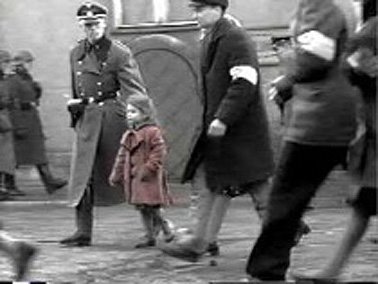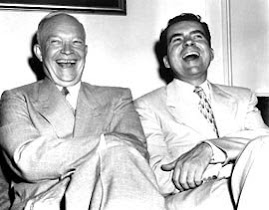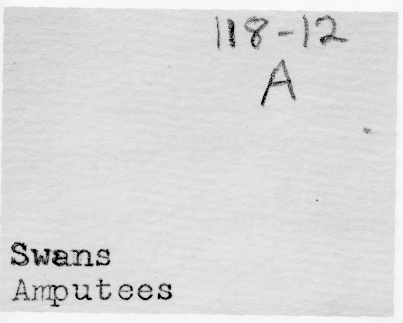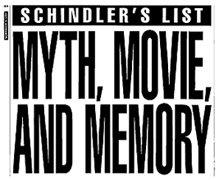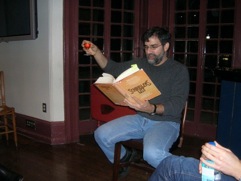
The Wallace Stevens relevant to contemporary poets (and here I am going to take extreme examples from among writers never thought of as deriving from the Stevensean aesthetic) such as Kenneth Goldsmith or Tan Lin, both of whom often operate in ambient language — words arranged as to be analogous to sound already in the environment—is the Stevens who strives at times to “undo the traditional work of polyphonic harmony” and makes “moves toward a monotony, a dead unison.” This is the little-appreciated Stevens who responds with beautiful uncreativity to Wittgenstein’s assertion that “A tune is a kind of tautology, . . . complete in itself.” The Stevens whose words are sometimes a “semiotically dirty, mumbled smattering over the possibility of” a vowel, such as “O.”

Ah, but the phrases quoted in the previous two sentences were not from Goldsmith or Lin, but from an essay by, of all poets, John Hollander. One of the keenest early pieces on sound in Stevens was indeed authored by Hollander, a writer of sonorous, formally lyric lines, very nearly an anti-modernist (although Joyce was his earliest influence), generally associated with traditional poetics — a poet not at all in the Pound-Williams-objectivist nexus. (Hollander is often said by mainstream critics to be writing in the Stevensean tradition, but it is the supposed Auden side of that mode. ) Many young scholars of modern and contemporary poetry were trying to resist the “Whose Era Is it? – Stevens or Pound” dichotomy even before Marjorie Perloff stated the case for this key literary-historical binarism thus in 1982. Taking up Hollander’s cause seemed to cede the languagy ground to Pound and made sound-in-Stevens criticism unfashionable at best, irrelevant at worst. In 1981, as my handwritten notes on a photocopy of “The Sound of the Music of Music and Sound” indicate, before even reading it closely I filed away the Hollander piece and conducted my own research and writing on Stevens (for a book that made a political reading of a politically unconscious modernist) without the benefit of its insights. Yet there it was, critically incorrect, yet a large and fundamental—and super-obvious—claim: “The whole of ‘The Whole of Harmonium’ [Stevens’ term for his overall poetic project, the continuous poetic] is a musical trope.” I once published a 13-page interpretation of “Sad Strains of a Gay Waltz” and “Mozart, 1935,” describing a counter-politics against the lyric made in verse using music as a trope, without consulting this essay. That a critic like Hollander works as a poet at the Frostean end of the spectrum of Stevensean phrasing (and sense of nature) kept me from hearing the fitness of the critic’s sense that sounds apparently external to the poet, such as be-thouing Romantic bird, were “asserting their own exemplariness” through words as auralities. Missing the musical forest for the literary-political trees, lured down a single path formed by straight and narrow rather than crisscrossed aesthetic taxonomies, hearing talk of sound but seeing metrical traditionalism, I overlooked the clear assertion that “Frost and Stevens would make very different things of th[e] observation” offered by George Santayana that “To hear is almost to understand."
 The Wallace Stevens relevant to contemporary poets (and here I am going to take extreme examples from among writers never thought of as deriving from the Stevensean aesthetic) such as Kenneth Goldsmith or Tan Lin, both of whom often operate in ambient language — words arranged as to be analogous to sound already in the environment—is the Stevens who strives at times to “undo the traditional work of polyphonic harmony” and makes “moves toward a monotony, a dead unison.” This is the little-appreciated Stevens who responds with beautiful uncreativity to Wittgenstein’s assertion that “A tune is a kind of tautology, . . . complete in itself.” The Stevens whose words are sometimes a “semiotically dirty, mumbled smattering over the possibility of” a vowel, such as “O.”
The Wallace Stevens relevant to contemporary poets (and here I am going to take extreme examples from among writers never thought of as deriving from the Stevensean aesthetic) such as Kenneth Goldsmith or Tan Lin, both of whom often operate in ambient language — words arranged as to be analogous to sound already in the environment—is the Stevens who strives at times to “undo the traditional work of polyphonic harmony” and makes “moves toward a monotony, a dead unison.” This is the little-appreciated Stevens who responds with beautiful uncreativity to Wittgenstein’s assertion that “A tune is a kind of tautology, . . . complete in itself.” The Stevens whose words are sometimes a “semiotically dirty, mumbled smattering over the possibility of” a vowel, such as “O.” Ah, but the phrases quoted in the previous two sentences were not from Goldsmith or Lin, but from an essay by, of all poets, John Hollander. One of the keenest early pieces on sound in Stevens was indeed authored by Hollander, a writer of sonorous, formally lyric lines, very nearly an anti-modernist (although Joyce was his earliest influence), generally associated with traditional poetics — a poet not at all in the Pound-Williams-objectivist nexus. (Hollander is often said by mainstream critics to be writing in the Stevensean tradition, but it is the supposed Auden side of that mode. ) Many young scholars of modern and contemporary poetry were trying to resist the “Whose Era Is it? – Stevens or Pound” dichotomy even before Marjorie Perloff stated the case for this key literary-historical binarism thus in 1982. Taking up Hollander’s cause seemed to cede the languagy ground to Pound and made sound-in-Stevens criticism unfashionable at best, irrelevant at worst. In 1981, as my handwritten notes on a photocopy of “The Sound of the Music of Music and Sound” indicate, before even reading it closely I filed away the Hollander piece and conducted my own research and writing on Stevens (for a book that made a political reading of a politically unconscious modernist) without the benefit of its insights. Yet there it was, critically incorrect, yet a large and fundamental—and super-obvious—claim: “The whole of ‘The Whole of Harmonium’ [Stevens’ term for his overall poetic project, the continuous poetic] is a musical trope.” I once published a 13-page interpretation of “Sad Strains of a Gay Waltz” and “Mozart, 1935,” describing a counter-politics against the lyric made in verse using music as a trope, without consulting this essay. That a critic like Hollander works as a poet at the Frostean end of the spectrum of Stevensean phrasing (and sense of nature) kept me from hearing the fitness of the critic’s sense that sounds apparently external to the poet, such as be-thouing Romantic bird, were “asserting their own exemplariness” through words as auralities. Missing the musical forest for the literary-political trees, lured down a single path formed by straight and narrow rather than crisscrossed aesthetic taxonomies, hearing talk of sound but seeing metrical traditionalism, I overlooked the clear assertion that “Frost and Stevens would make very different things of th[e] observation” offered by George Santayana that “To hear is almost to understand."
Ah, but the phrases quoted in the previous two sentences were not from Goldsmith or Lin, but from an essay by, of all poets, John Hollander. One of the keenest early pieces on sound in Stevens was indeed authored by Hollander, a writer of sonorous, formally lyric lines, very nearly an anti-modernist (although Joyce was his earliest influence), generally associated with traditional poetics — a poet not at all in the Pound-Williams-objectivist nexus. (Hollander is often said by mainstream critics to be writing in the Stevensean tradition, but it is the supposed Auden side of that mode. ) Many young scholars of modern and contemporary poetry were trying to resist the “Whose Era Is it? – Stevens or Pound” dichotomy even before Marjorie Perloff stated the case for this key literary-historical binarism thus in 1982. Taking up Hollander’s cause seemed to cede the languagy ground to Pound and made sound-in-Stevens criticism unfashionable at best, irrelevant at worst. In 1981, as my handwritten notes on a photocopy of “The Sound of the Music of Music and Sound” indicate, before even reading it closely I filed away the Hollander piece and conducted my own research and writing on Stevens (for a book that made a political reading of a politically unconscious modernist) without the benefit of its insights. Yet there it was, critically incorrect, yet a large and fundamental—and super-obvious—claim: “The whole of ‘The Whole of Harmonium’ [Stevens’ term for his overall poetic project, the continuous poetic] is a musical trope.” I once published a 13-page interpretation of “Sad Strains of a Gay Waltz” and “Mozart, 1935,” describing a counter-politics against the lyric made in verse using music as a trope, without consulting this essay. That a critic like Hollander works as a poet at the Frostean end of the spectrum of Stevensean phrasing (and sense of nature) kept me from hearing the fitness of the critic’s sense that sounds apparently external to the poet, such as be-thouing Romantic bird, were “asserting their own exemplariness” through words as auralities. Missing the musical forest for the literary-political trees, lured down a single path formed by straight and narrow rather than crisscrossed aesthetic taxonomies, hearing talk of sound but seeing metrical traditionalism, I overlooked the clear assertion that “Frost and Stevens would make very different things of th[e] observation” offered by George Santayana that “To hear is almost to understand."






 "I teach horizontally, meaning that while I might begin with a fixed idea of what I'm going to teach that day, I let it drift rhizomatically way off topic, often pulling it back when it gets too far. I rely on non-fixed materials to teach this way; the whole world is at my fingertips. Should I go off on a tangent about John and Rauschenberg and their love relationship as expressed in Rauschenberg's bed, an image of that bed is always a click away. From there, we can head anywhere into the non-fixed universe, be it film, text or sound. And of course, that always takes us elsewhere. As Cage says, 'We are getting nowhere fast.'"
"I teach horizontally, meaning that while I might begin with a fixed idea of what I'm going to teach that day, I let it drift rhizomatically way off topic, often pulling it back when it gets too far. I rely on non-fixed materials to teach this way; the whole world is at my fingertips. Should I go off on a tangent about John and Rauschenberg and their love relationship as expressed in Rauschenberg's bed, an image of that bed is always a click away. From there, we can head anywhere into the non-fixed universe, be it film, text or sound. And of course, that always takes us elsewhere. As Cage says, 'We are getting nowhere fast.'" 

 that anyone has yet got the imaginative measure of that terrifying day six years ago. Certainly our Tolstoy has not crawled out of the rubble. The closest we have, Don DeLillo, succeeded as an essayist-journalist ("In the Ruins of the Future: Reflections on Terror and Loss in the Shadow of September,” Harper’s, December 2001) but, to my mind, failed as a novelist ("Falling Man"). One reason, perhaps, is that the remembered emotion was instantly buried under a pile of cultural junk.' - Tod Gitlin in his review of Susan Faludi's The Terror Dream (written for
that anyone has yet got the imaginative measure of that terrifying day six years ago. Certainly our Tolstoy has not crawled out of the rubble. The closest we have, Don DeLillo, succeeded as an essayist-journalist ("In the Ruins of the Future: Reflections on Terror and Loss in the Shadow of September,” Harper’s, December 2001) but, to my mind, failed as a novelist ("Falling Man"). One reason, perhaps, is that the remembered emotion was instantly buried under a pile of cultural junk.' - Tod Gitlin in his review of Susan Faludi's The Terror Dream (written for 


